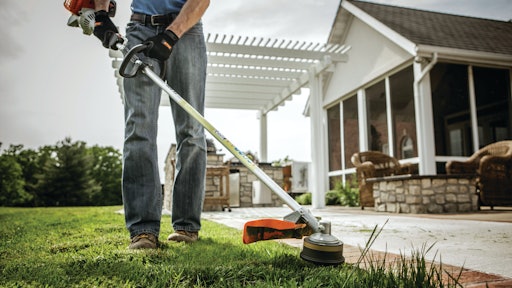
There are some basics to producing good estimates. You must know how to accurately compute the amount of labor and materials you'll need. You also need to understand site conditions to determine how they may affect productivity and the equipment you use.
If you get a good handle on the above, you're well on your way to producing reliable estimates. That said, there are a few things that can throw your estimates out of whack—causing you to either over or underbid. A big one is not estimating enough to recover your overhead. You must understand what your overhead is and devise an estimating system that will allow you to recover it and make a profit. At the same time, you don't want to allocate too much overhead to a job because that could knock you out of the running to even win the job.
Consider the following when developing a consistent, reliable estimating system that works for your company.
SORS, single overhead recovery system, is where you simply mark up all of your direct costs by a single percentage. One way to determine that percentage is to take a look at your annual budget. Take all budgeted direct costs (materials, labor, equipment, subs) and divide by budgeted overhead.
This is a pretty simple and straightforward way to estimate. However, the potential problem is that SORS treats all direct costs the same. But most people would agree that labor should shoulder the majority of your overhead burden. Thus, when using SORS, you could underbid higher-labor jobs and leave money on the table, or overbid lower-labor jobs and lose out on work.
DORS, dual overhead recovery system, is where you add a pre-determined amount to two of your direct costs: materials and labor (with burden). For example, you might take materials times 0.2 and labor times 0.6. Those markups should be based on your budget, not just pulled out of the air. They can be complicated to figure out. And even if you figure them out, you can run into problems.
For example, with DORS, equipment costs are simply tossed into overhead. So on jobs where you use a lot of equipment, you might underbid. Conversely, on jobs where you don't use much equipment, you might overbid. You might be better off to determine how much it costs you to operate each truck and piece of equipment you have by the hour—which takes into consideration things like purchase price, trade-in value, gas, oil and maintenance, insurance, etc.—and allocate those equipment costs specifically to bids.
One instance where simply dropping equipment costs into overhead might work is if you're primarily a "mowing contractor". You're charging "by the hour", and that hourly rate includes use of your truck, mower(s), trimmers and blowers, etc.
MORS (multiple overhead) is where you mark up each of your direct costs by a certain percentage. Again, this is quite straightforward. But unlike with DORS, here you normally base those percentages—at least for materials, equipment and subs—on "industry norms" as opposed to your own budget or actual numbers. Then, you determine how much to mark up labor by looking at how much overhead still needs to be recovered. Therefore, if those industry norms for materials, equipment and subs don't jive with your specific company, labor could end up shouldering either too much or not enough of the overhead burden.
Factoring is when you take, for example, "materials x 3" because materials typically represent about a third of your sales in a given year. This assumes far too many things, chiefly being that every job you bid will be 30% materials. Thus, if you bid a higher-labor job with less materials, your price is going to be way, way too low. On the other hand, if you bid a lower-labor job with higher materials, your price will probably be too high.
Overhead-Per-Hour says you look at your total budgeted company overhead for the year, divide that by your budgeted billable hours, and determine an hourly rate. This is a pretty simple way to allocate overhead to a job, but does place all of the overhead burden on labor.
The bottom line
You want a consistent, reliable, easy-to-use estimating system that keeps you competitive and profitable. In closing, consider these examples:
Company A has annual sales of $500,000. Labor with burden is 28% of sales, Equipment is 10%, Materials is 32%, and Overhead is 21%. Average wage with burden is $15/hr. Total budgeted billable hours is roughly 9,330.
On a job where direct costs equal $10,000 and break down as follows—50% materials, 40% labor, 10% equipment—and a profit margin of 10% is factored in:
- Each of the five estimating methods described in this article produce a different amount, ranging from $14,245 (MORS) to $16,038 (DORS).
- That's a price difference of $1,793, or roughly 13%.
- The second lowest was Overhead-Per-Hour followed by SORS and Factoring. These middle three methods are within about $700 of each other.
On a job where direct costs equal $6,000 and break down as follows—10% materials, 60% labor, 30% equipment—and a profit margin of 10% is factored in:
- The four useful methods produced estimates ranging from $8,580 (SORS) to $9,847 (DORS).
- That's a price difference of $1,267, or roughly 15%.
- The second lowest was MORS followed by Overhead-Per-Hour. These middle two were within around $230 of each other.
- In this scenario, Factoring doesn't even work. Because materials represent such a small percentage, this price is way too low ($600 x 3 = $1,800).
There are clearly several estimating methods out there, along with successful contractors who can attest to each of them. Generally speaking, they all produce fairly similar results in most cases. The important thing is to know your own company's numbers, and challenge your accountant and/or consultant to help validate the estimating system you are using. It also helps to have a decent idea as to which methods your competitors are using. Then you can massage your numbers accordingly, bid by bid, to win more work and make more money.






























